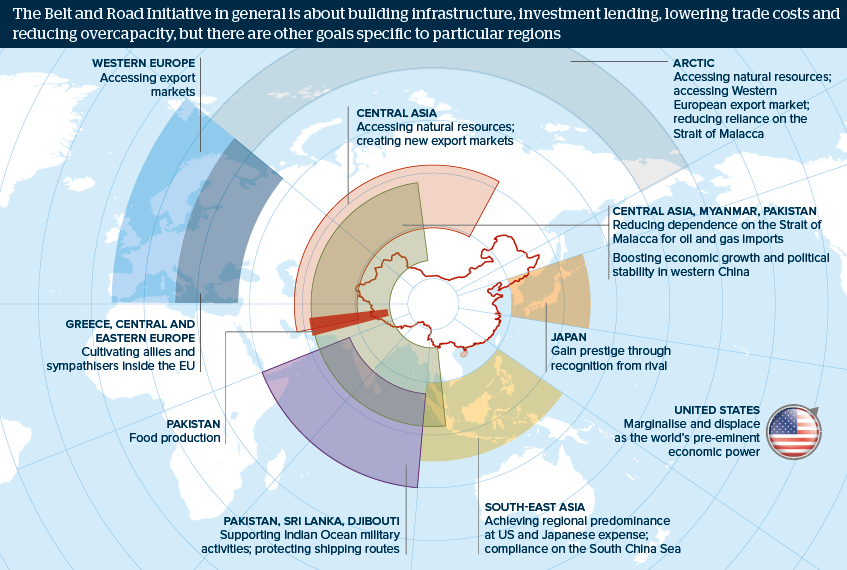Belt and Road's purposes differ in different regions
China's Belt and Road uses foreign investment as an instrument to achieve diverse region-specific goals
Source: Oxford Analytica
Outlook
The Belt and Road Initiative (BRI) suggests that China believes it can no longer achieve rapid economic development using reforms and investments within its borders alone, and must now also shape the outside world to create conditions favourable to its continued development.
This includes developing new foreign markets where none exist and improving connectivity across land borders so China’s inland regions can develop like the coastal trading cities already have. The BRI's security dimension lies foremost in diversification -- reducing dependence on particular markets, suppliers and trade routes.
Impacts
- Beijing prefers to exploit vacant niches and gradually undermine the established international order rather than challenging it head-on.
- China’s leadership believes that economics determines politics: establish the right economic conditions and politics develop favourably.
- However, the ability to implement BRI plans in the first place will depend on favourable host-country and international politics.
See also
- Myanmar armed groups eye leverage through 2020 poll - Jan 15, 2020
- Pakistan’s watchdog reprieve barely eases economic woe - Oct 25, 2019
- Modi-Xi summit will foster goodwill but little more - Oct 3, 2019
- Sri Lanka will struggle to escape its debt trap - Jun 19, 2019
- Myanmar’s Rakhine rifts roil Modi’s ‘Act East’ policy - Apr 9, 2019
- EU is becoming sceptical about China running its ports - Feb 6, 2019
- India-China rivalry in the Andaman Sea will increase - Jan 29, 2019
- Prospects for the Belt and Road Initiative in 2019-23 - Dec 7, 2018
- More graphic analysis
